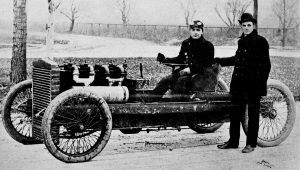
The Mad Motor Maker
 Recently, we covered the news of Elon Musk’s ill-planned tweet declaring a move to take Tesla private, despite having no resources, concrete plans or informed board members of the decision. The tweet was merely the latest in a long string of worrisome workaholic behavior that has, admittedly, made Musk one of the most successful men in the world, but also created an environment where turnover rate for employees at both the executive and production levels is far past the point of unsustainable. Musk has recently been shown smoking pot, in addition to blaming the sleep aid Ambien for his erratic behavior. Allegations of greater drug use have surfaced on more than one occasion.
Recently, we covered the news of Elon Musk’s ill-planned tweet declaring a move to take Tesla private, despite having no resources, concrete plans or informed board members of the decision. The tweet was merely the latest in a long string of worrisome workaholic behavior that has, admittedly, made Musk one of the most successful men in the world, but also created an environment where turnover rate for employees at both the executive and production levels is far past the point of unsustainable. Musk has recently been shown smoking pot, in addition to blaming the sleep aid Ambien for his erratic behavior. Allegations of greater drug use have surfaced on more than one occasion.
All this has culminated in a ruling from the Securities and Exchange Commission that Musk misled investors with his tweet, eventually exposed as an immature stunt, and declared him ineligible to perform his duties as Chairman for Tesla. In addition to stepping down from his role, effective within the next 45 days, both Musk and Tesla will be paying fines of $20 million respectively, and Musk will be barred from serving in the Chairman position for three years, though he will retain his role as CEO.
It all seems a little like the defining character arc of Tony Stark in the first Iron Man movie. The hyperactive, workaholic genius with little thought to self-preservation beyond the latest hedonistic indulgence, will eventually be brought to heel by his own hubris. Naturally, it’s a tale we’ve all heard before.
And not for the first time within the automotive sphere.
Because the idea of building a motor company from the ground up, no matter when, where or how you embark upon the journey, is not a decision made by sane men. It is not a decision made by men who are content to allow history to unfold without their input. And it is not for the fainted-hearted, weak-willed or procrastinatory.
Look at the big names in automotive history and find the speck of sanity. Who among them did not build chariots of death in a barn or carriage house? Who among them did not race untested machines as fast as engineering of the time would allow? Who among them did not wage fortune, sanity and their pride on the success of an invention that would replace the centuries-tested horse and carriage?
Henry Ford was many things–an entrepreneur, a businessman, a genius, an opportunist. He modernized production, reworked the labor system and developed the prototype for a world in which automobiles were as ubiquitous as the people who drove them. And yet, he was also a man who broke a land speed record at 91.4 miles per hour on an icy track in a car that had already killed a driver. While there is a great much Musk and Ford would struggle to reconcile, on the primal level of madmen with plans, they would surely find common ground.
 And Ford and Musk are not alone in their take-no-prisoners approach to automotive success. Look to the squabbling Duryea brothers, who won America’s first automobile race in an open-cockpit Duryea automobile, in Chicago on Thanksgiving, completing the 54-mile race course in the snow at an average speed of 7.5 miles per hour.
And Ford and Musk are not alone in their take-no-prisoners approach to automotive success. Look to the squabbling Duryea brothers, who won America’s first automobile race in an open-cockpit Duryea automobile, in Chicago on Thanksgiving, completing the 54-mile race course in the snow at an average speed of 7.5 miles per hour.
And, of course, when discussing our beloved madmen, we cannot forget the Tucker tall tale and Preston Tucker’s rage against the monopolies of the American auto industry. While far less successful than Ford or Musk, and far more successful than the woefully forgotten Duryea brothers, Tucker was a wild force, a man determined to leave his stamp on history in the form of 51 Tucker 48s, in an automotive retelling of the Crucible that, naturally, also happened to involve the Securities and Exchange Commission.
So what does the Bedlam bunkhouse solidary mean for Elon Musk and the future of Tesla? It’s hard to tell–while madness, obsessive workaholic tendencies, and an insane brilliance worked for the likes of Henry Ford, it has left a great many others coughing up dust at the starting line. Tesla stocks are down, but whether that’s more in line with a fear for the company’s future or a protest of Musk’s removal is anyone’s guess.
Regardless, Musk’s mandatory holiday was bound to happen sooner than later. Whether it truly is the behavior of a mad genius, or nothing more than symptoms of overwork and fatigue, his public behavior as of late–and when you are Elon Musk, it is all public behavior–is a sore spot on top of the company’s continued failure to hit the production schedule. Eventually, one tweet was bound to push a larger power that be over the edge–it turned out that tweet happened to be an allusion to a college pothead joke for the sheer amusement of his 17-years-younger celebrity girlfriend. From here, Tesla may suffer in the short term, but chances are good that Musk’s step back from the day-to-day will allow for a step forward for the year-to-year.
Madness and brilliance may run a close parallel, but the future of a company, alternative energy, and transportation as a whole depends entirely on which one comes out ahead. ![]()

